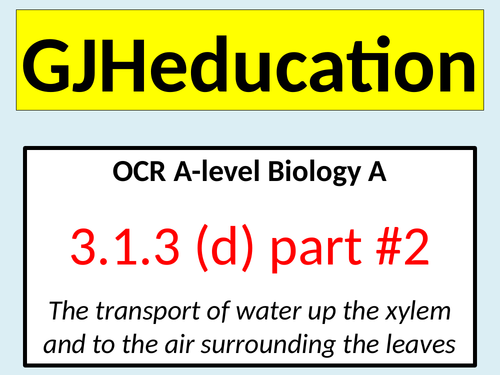





This fully-resourced lesson describes how the mechanisms by which water upwards in the xylem to the leaves and then into the air. The detailed PowerPoint and accompanying, differentiated resources have primarily been designed to cover the second part of point 3.1.3 (d) as detailed in the OCR A-level Biology A specification
This lesson has been written to follow on from the end of the previous lesson, which finished with the description of the transport of the water and mineral ions from the endodermis to the xylem. Students are immediately challenged to use this knowledge to understand root pressure and the movement by mass flow down the pressure gradient. Moving forwards, time is taken to study the details of transpiration pull and the interaction between cohesion, tension and adhesion in capillary action is explained. Understanding is constantly checked through a range of tasks and prior knowledge checks are also written into the lesson to challenge the students to make links to previously covered topics such as the structure of the transport tissues. The final part of the lesson considers the journey of water through the leaf and ultimately out of the stomata in transpiration. A step by step guide using questions to discuss and answer as a class is used to support the students before the final task challenges them to summarise this movement out of the leaf.
Get this resource as part of a bundle and save up to 33%
A bundle is a package of resources grouped together to teach a particular topic, or a series of lessons, in one place.
Something went wrong, please try again later.
This resource hasn't been reviewed yet
To ensure quality for our reviews, only customers who have downloaded this resource can review it
Report this resourceto let us know if it violates our terms and conditions.
Our customer service team will review your report and will be in touch.